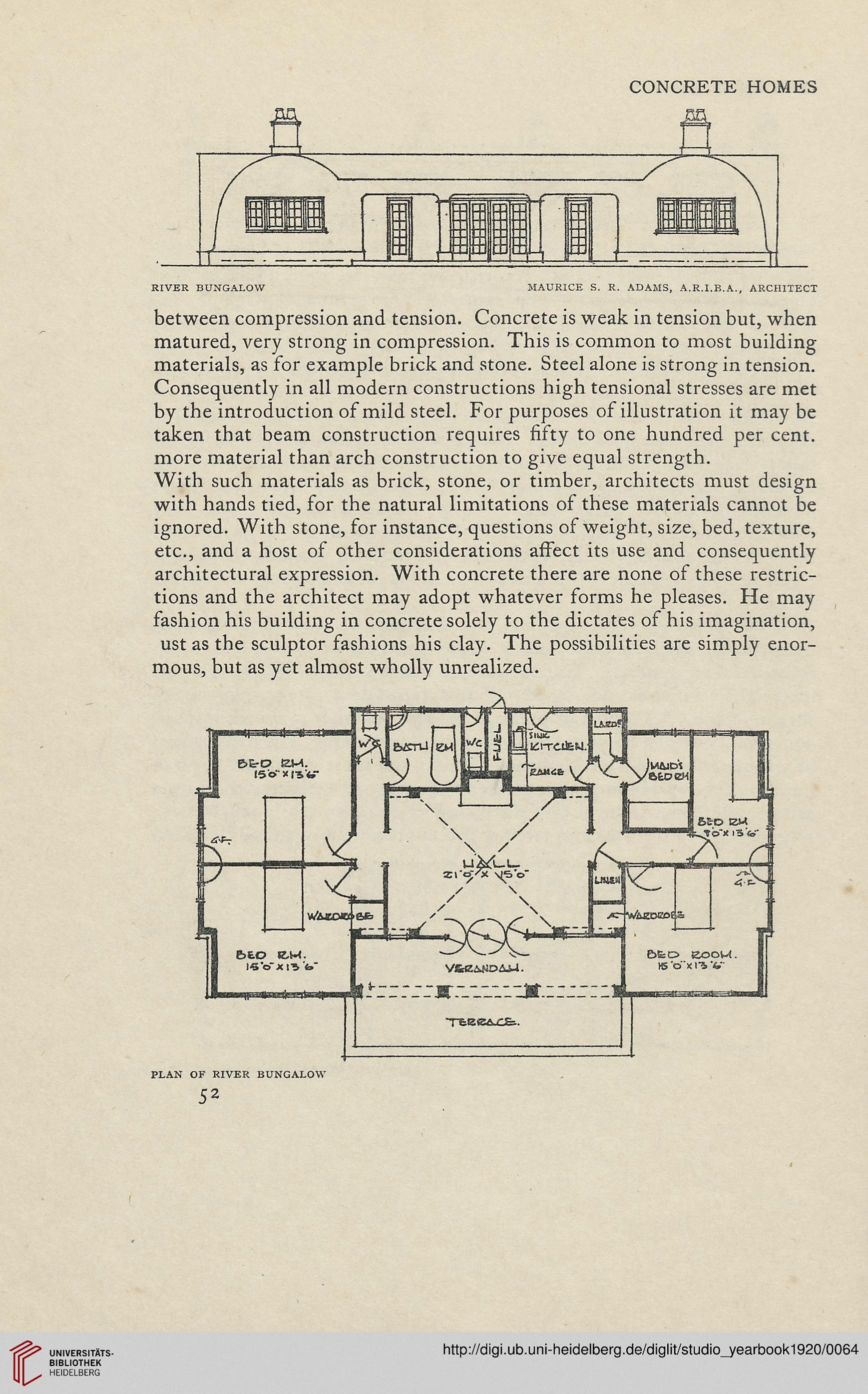CONCRETE HOMES
between compression and tension. Concrete is weak in tension but, when
matured, very strong in compression. This is common to most building
materials, as for example brick and stone. Steel alone is strong in tension.
Consequently in all modern constructions high tensional stresses are met
by the introduction of mild steel. For purposes of illustration it may be
taken that beam construction requires fifty to one hundred per cent,
more material than arch construction to give equal strength.
With such materials as brick, stone, or timber, architects must design
with hands tied, for the natural limitations of these materials cannot be
ignored. With stone, for instance, questions of weight, size, bed, texture,
etc., and a host of other considerations affect its use and consequently
architectural expression. With concrete there are none of these restric-
tions and the architect may adopt whatever forms he pleases. He may
fashion his building in concrete solely to the dictates of his imagination,
ust as the sculptor fashions his clay. The possibilities are simply enor-
mous, but as yet almost wholly unrealized.
52
between compression and tension. Concrete is weak in tension but, when
matured, very strong in compression. This is common to most building
materials, as for example brick and stone. Steel alone is strong in tension.
Consequently in all modern constructions high tensional stresses are met
by the introduction of mild steel. For purposes of illustration it may be
taken that beam construction requires fifty to one hundred per cent,
more material than arch construction to give equal strength.
With such materials as brick, stone, or timber, architects must design
with hands tied, for the natural limitations of these materials cannot be
ignored. With stone, for instance, questions of weight, size, bed, texture,
etc., and a host of other considerations affect its use and consequently
architectural expression. With concrete there are none of these restric-
tions and the architect may adopt whatever forms he pleases. He may
fashion his building in concrete solely to the dictates of his imagination,
ust as the sculptor fashions his clay. The possibilities are simply enor-
mous, but as yet almost wholly unrealized.
52




